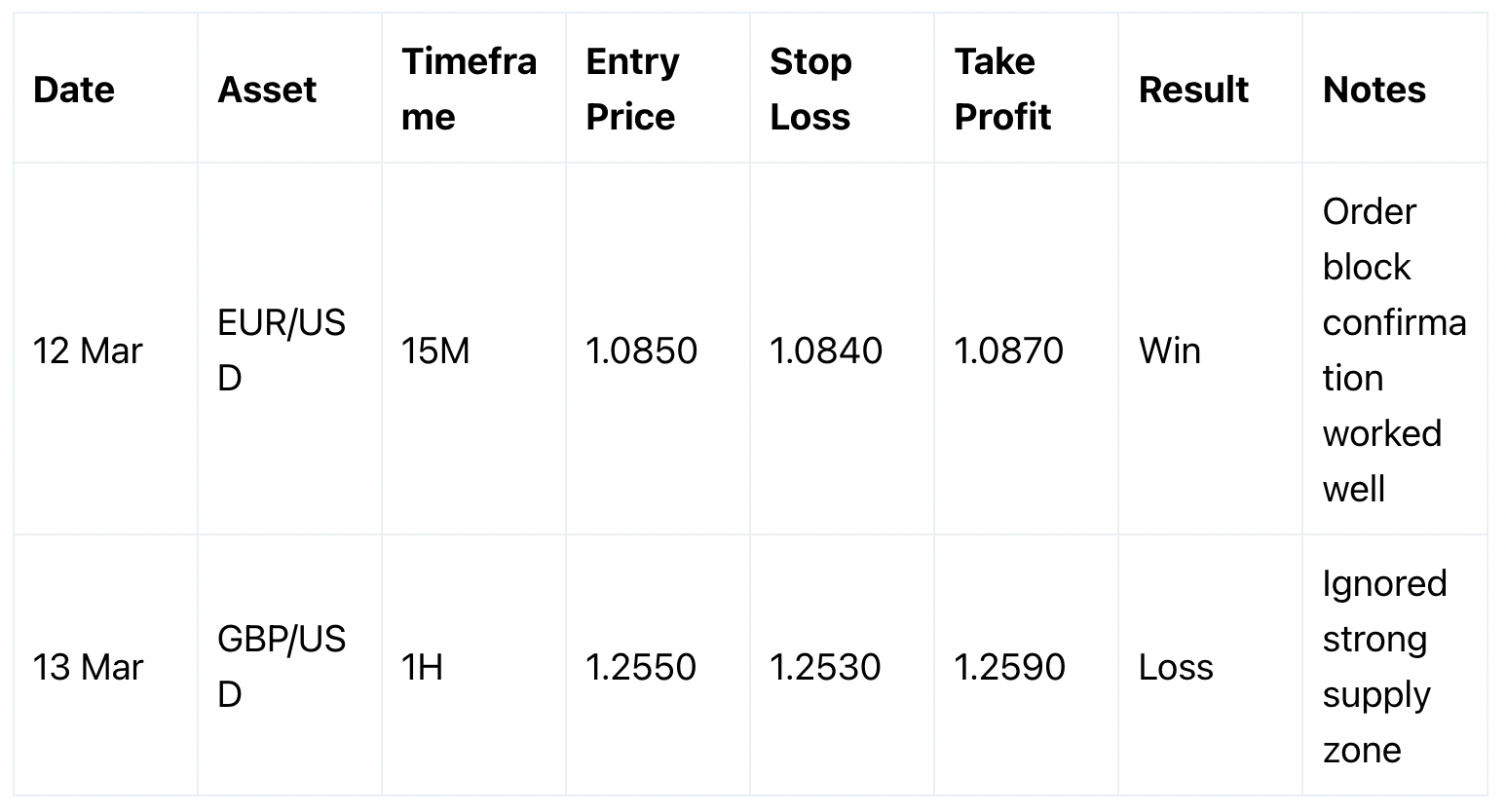Lecture 18: Backtesting SMC Strategies – Tools, Process, and Recording Results
Backtesting is a crucial step in developing a successful Smart Money Concepts (SMC) trading strategy. It involves testing historical market data to determine how well a strategy would have performed in the past. This process helps traders refine their approach, identify strengths and weaknesses, and build confidence before applying the strategy in live trading.
Why Backtesting Matters in SMC
- Validates Strategy Effectiveness – Ensures that the strategy works in different market conditions.
- Identifies Strengths and Weaknesses – Helps traders recognize which aspects of their method are reliable and which need adjustment.
- Builds Confidence – Seeing a strategy perform well historically provides assurance when trading live.
- Develops Discipline – Encourages traders to stick to their plan and avoid emotional decision-making.
Essential Tools for Backtesting SMC
- TradingView – One of the best platforms for manual backtesting with replay features.
- Forex Tester – A dedicated software that allows traders to simulate historical price action.
- MetaTrader 4/5 (MT4/MT5) – Provides built-in strategy testing and allows for automated backtesting.
- Excel or Google Sheets – Used for tracking backtesting results and analyzing performance metrics.
Step-by-Step Backtesting Process
Step 1: Define Your SMC Trading Strategy
Before backtesting, ensure you have a well-defined SMC trading plan. This should include:
- Entry criteria (e.g., order blocks, liquidity grabs, fair value gaps).
- Stop loss and take profit placement.
- Risk management rules (e.g., risk per trade).
Step 2: Select a Market and Timeframe
- Choose a specific market (Forex, stocks, indices, crypto).
- Pick a timeframe that aligns with your trading style (e.g., 1-hour for intraday trading, 15-minute for scalping).
Step 3: Use the Replay Tool and Start Testing
- Open your chosen chart on TradingView or another backtesting platform.
- Use the replay function to remove hindsight bias.
- Scroll back in time and advance the chart one candle at a time.
Step 4: Identify Trade Setups
- Apply your SMC strategy by marking up order blocks, fair value gaps, supply and demand zones, and liquidity grabs.
- Follow your defined rules for entry, stop loss, and take profit.
Step 5: Record Every Trade
- Note down trade details in a trading journal:
- Date and time of trade.
- Entry and exit price.
- Trade outcome (win/loss).
- Notes on mistakes or improvements.
- Date and time of trade.
Step 6: Analyze the Data
After recording multiple trades, look for patterns in performance:
- Win rate – How often trades are successful.
- Risk-to-reward ratio – Are you risking too much for little reward?
- Common mistakes – Are you missing key confirmations or overtrading?
Example of a Backtesting Journal Entry

Common Mistakes When Backtesting
- Overfitting the strategy – Forcing trades to fit the rules rather than testing objectively.
- Skipping recording results – Not tracking trades means missing out on key performance insights.
- Ignoring different market conditions – Strategies should be tested in trending, ranging, and volatile markets.
- Not testing across multiple timeframes – What works on a 5-minute chart may not work on a 1-hour chart.
Final Thoughts
Backtesting is the foundation of building a profitable SMC trading strategy. By thoroughly testing and refining your approach, you can eliminate uncertainty, improve execution, and develop a disciplined trading mindset. Commit to backtesting regularly, track your results, and continuously adjust your strategy to stay ahead in the market.
How useful was this article?
If you'd like more Smart Money tips, download the Price Action Cheat Sheet here.
To your success,
The Trading Strategy Guides Team